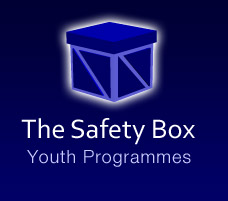In recent years, our society has highlighted more than ever how many women and girls are at risk of becoming unsafe, or already are. The news stories, social media, and even conversations with friends highlight another incident every day where a woman is at risk. From cases such as Sarah Everard, Sabina Nessa, Lena Zhang Harrap, Child Q, and cases in the US including Gabby Petito and Lauren Smith-Fields, not only are more women speaking up about how unsafe they feel, but more communities and organisations are recognising just how many women are at risk, and are putting in place more resources to assist and support women. However, more women are in need of these resources, not only showing them how to keep themselves safe in a society such as ours, but also being able to recognise those signs of danger in the first place.
After the tragic murder of Sarah Everard, newspapers, organisations, and communities opened up the conversation regarding the amount of women who do not feel safe in the UK. Within companies, the news, various articles, and other mediums and places, more discussions were held and centred around women’s safety. In the age of the #MeToo era, this kind of discussion comes as no surprise, however, the added tragedy of multiple female homicides in the UK brings a sense of nuance, heightened urgency and focus to an already blooming conversation. It is no longer just the case of, “How do we prevent sexual harrasment?” but “How do we prevent murder?” These conversations are not new, because these issues are not new. They span over years of covering up the realities and trauma of these women with nonchalance or societal blame. The difference is that with the vast global connections we have via the internet and social media, information, including information that would have been kept quiet in the past, is now widely circulated, bringing more voices, more awareness, and more horrified reactions to the conversation. People are seeing it more, especially women who have faced similar situations. These women are able to talk about their experiences amongst a community who not only relates, but who shares their need for societal change, as they should.
It is said that almost every woman knows at least one other woman who has encountered some kind of harassment, whether that is catcalling, unwanted comments, inappropriate touching, whistles, sexual harrasment or sexual assault. According to statistics from the organisation End Violence against Women, in June 2021, 1 in 2 women felt unsafe walking alone at night in quiet streets near their home, compared to 1 in 7 men. 4 out of 5 women also felt unsafe being out in an open spack, such as a park, after dark. When looking at harassment specifically, 2 out of 3 women aged 16-34 experienced some kind of harassment in the year 2020-2021, including catcalls, comments, jokes, and feeling as though they were being followed. This can differ greatly once age and race are factored in, with studies showing how young black women and girls are more likely to be viewed as older than their age, and thus regarded as needing less safety and protection than young girls of other races. However, all women and girls are in need of safety and protection, no matter their age, race, height, body type, etc.
Suriving an ordeal such as assault or sexual harrassment can leave the victim who went through it with such physical and mental pain that it can be hard to escape it. The Survivors Trust, an organisation dedicated to helping survivors of sexual assault and violence mentions how many SA victims experience effects from PTSD, depression, anxiety, nightmares and sleep problems, difficulties concentrating, and self detructive behaviours. We see and hear about these effects everywhere, from news reports to social media, with individuals giving first hand accounts of the pain that they went through and the mental and emotional scars it left behind. This should not be as normal and commonplace as it has become. With so many women sharing stories of facing danger, violation, assault or worse at the hands of perpetrators, and revealing how they have had to survive after such an ordeal, more women and girls are left not only feeling heartbreak for these women who they relate to, but also fear for their own safety, and nobody should be afraid to simply exist.
At The Safety Box CIC ®, we pride ourselves on being able to provide some support through our self defence sessions. We want more young women and girls to be able to feel safe on our streets, to feel safe going into places, to feel safe existing in our society. All women deserve to live in a society that prioritises their safety, that brings justice to people that harm them, that gives them the space and courage to speak up, that provides them with knowledge, support, and resources in order to keep them safe.These are not only growing in demand, but in availability. As the need for communication and awareness is being met, women and girls are asking for those resources. Resources that not only focus on the behaviour of the perpetrator, but simple ways to defend themselves. Our self defence program hopes to fill some of that gap, providing simple, easy-to-remember techniques to defend yourself against harm and danger.
In Part 2, we will focus on some practical steps and resources that can be used to keep yourself safe in dangerous situations, as well as signs to be aware of and advice.



